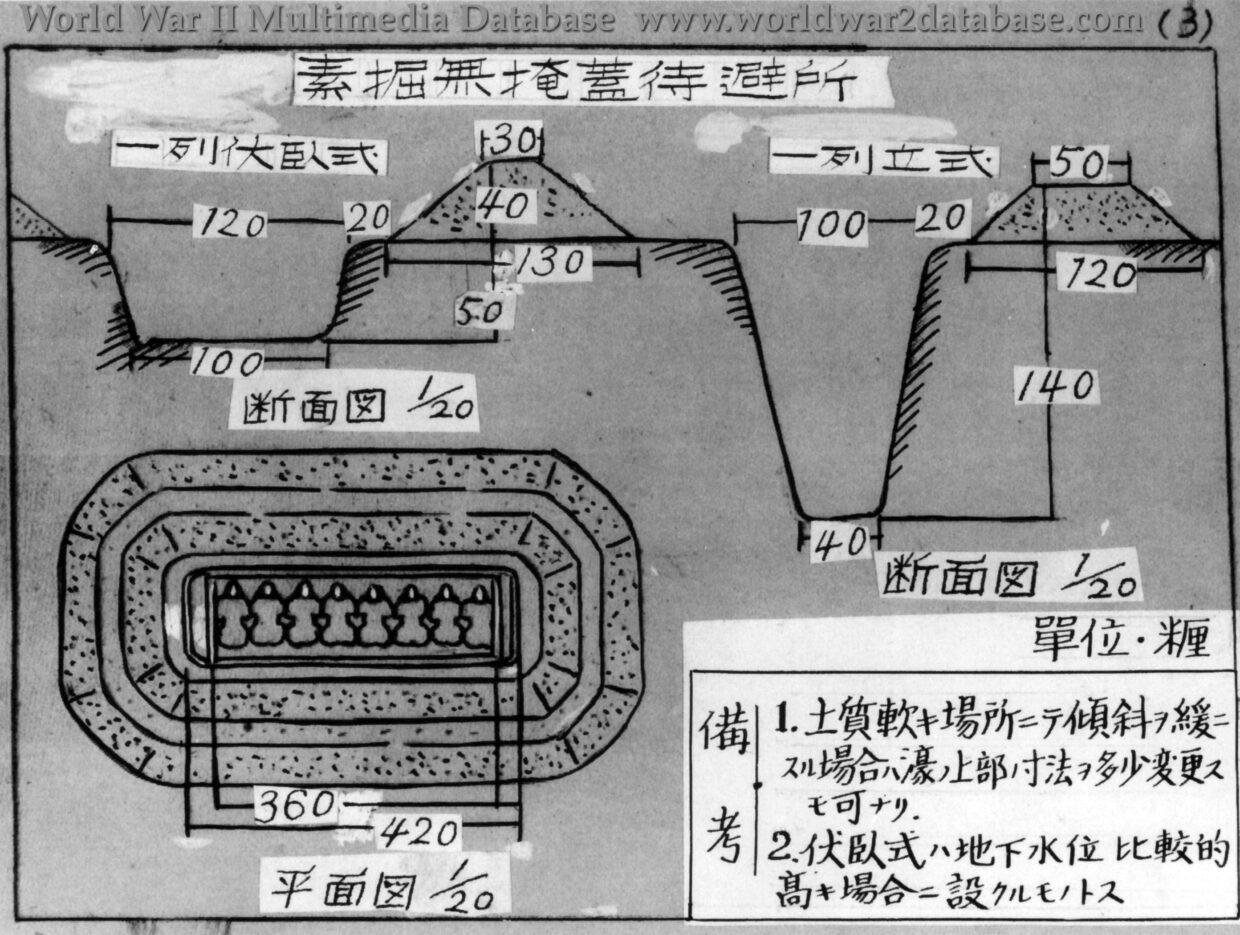| Principle diagram of Japanese “bokugo“ (little hole) air raid shelter. After the Doolittle Raid, the militarists began to realize that Japan was woefully under-prepared for mass bombings. This diagram was published in newspapers and shelters were built all over the country. Unlike the British Anderson shelters, which were issued free or at a reasonable cost and provided overhead protection, these open pit shelters were left to the populace to dig and set up. The entire city of Tokyo had only eighteen relatively safe concrete shelters, with a total capacity of five thousand, little more than one space for every thousand persons. The next-best shelters comprised the basements of the relatively few Western-style buildings, constructed to resist earthquakes, and some equally sparse cave shelters. The subway system was rejected as a shelter since it was very close to the surface. But the mass of citizens lacked any adequate haven. Some families gathered in clothes cupboards within their homes, as the government recommended. Most citizens, however, headed for their bokugo, little holes that had been bored beside their houses or in the little ribbon of earth between street and sidewalk. These were typically crude, two to five meters long, one meter across, and one and one-half to two meters deep, covered with a roof made with a few poles, bamboo rafters, and a thin crust of earth. The citizens provided these rudimentary protections themselves, chanting “oh, one, two, oh, one, two“ as they dug, around which many then planted flowers, and into which many a man or woman tripped, breaking bones. | |
| Image Filename | wwii1215.jpg |
| Image Size | 1.17 MB |
| Image Dimensions | 2785 x 2100 |
| Photographer | Unknown |
| Photographer Title | |
| Caption Author | Jason McDonald |
| Date Photographed | May 01, 1942 |
| Location | |
| City | |
| State or Province | |
| Country | Japan |
| Archive | |
| Record Number | |
| Status | Caption ©2007, ©2024 MFA Productions LLC Please Do Not Duplicate or Distribute Without Permission |

Author of the World War II Multimedia Database

